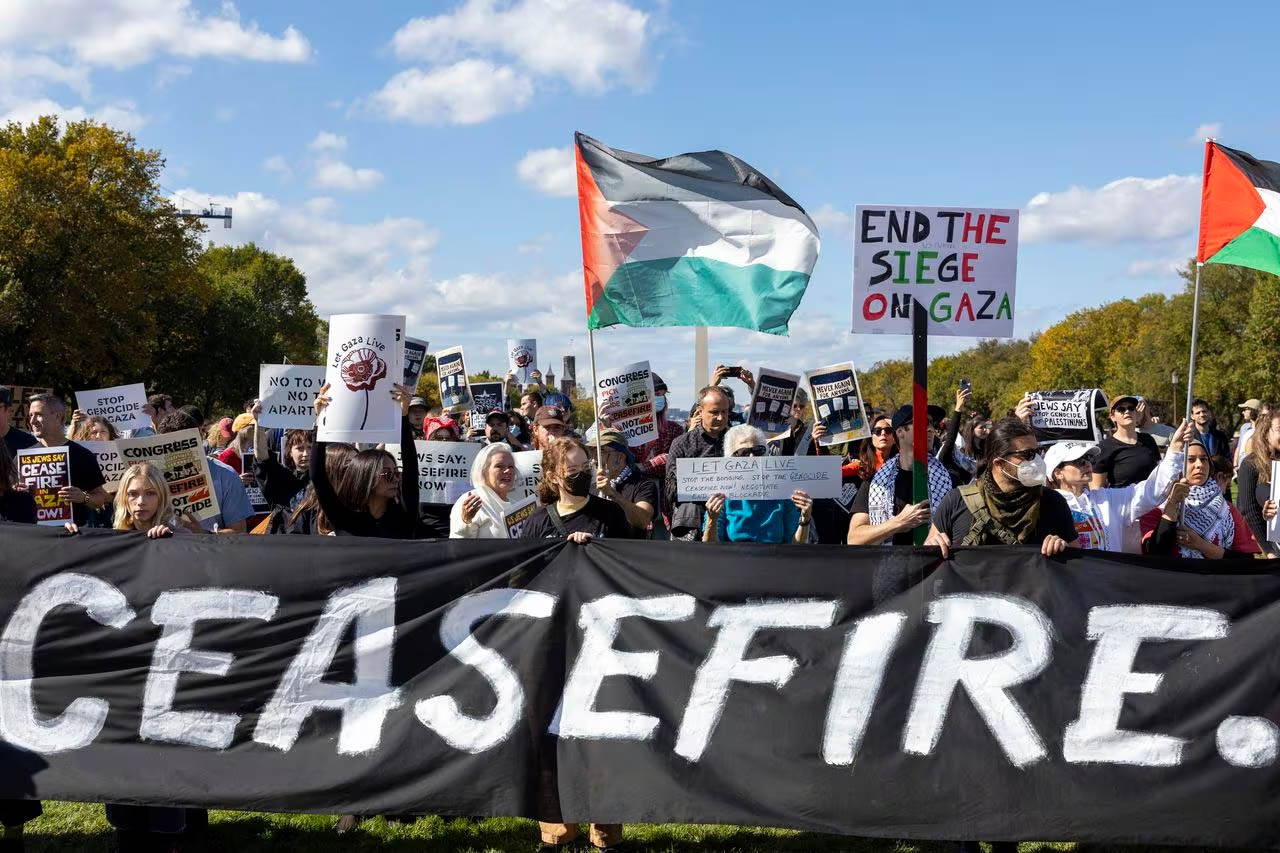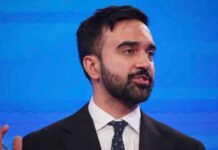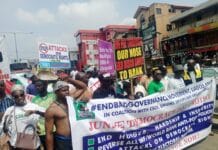The butcher of Sabra and Shatila has died
Shahar Benhorin, Socialist Struggle Movement (CWI in Israel/Palestine)
The butcher of Sabra and Shatila has died. Ariel Sharon, once known as the “father of Israeli settlements”, died after eight years in a semi-coma, following a stroke while still prime minister in January 2006.
Many former and present capitalist leaders around the world have expressed sympathies, grief and even admiration for this former Israeli general and politician. Along with many in the mainstream media outside the Arab world, they’re attempting to whitewash, rewrite history and rebrand the record of a war criminal – with the help of demagogic personalisation – as a brave combatant for peace.
“He was a warrior for the ages and a partner in seeking security for the Holy Land and a better, peaceful Middle East”, said George W Bush. US Secretary of State, John Kerry, suggested that “in his final years as Prime Minister, he surprised many in his pursuit of peace”. British Prime Minister, David Cameron, stated that “as Prime Minister he took brave and controversial decisions in pursuit of peace, before he was so tragically incapacitated”.
Austerity and brutality
A heavy Thatcherite, Sharon’s governments pursued aggressive neo-liberal measures, repressed workers’ strikes and were directly responsible for a sharp rise in poverty in Israeli society. One third of children still live under the poverty line. “You are killing people” one Likud MP once accused his fellow Likud ministers in a meeting with them, in an attempt to differentiate himself from the Sharon government’s neo-liberal measures. Sharon has been reported to have sarcastically commented on the accusation to another politician next to him: “Of all the people here, I’m the only one who has killed people… And I mean with the hands, alright?”
Sharon’s life story encompasses quite a few of the Israeli regime’s most horrendous crimes against the Palestinian people and the masses in the region – and in reality he brought nothing but war and adversity to Israeli working class people.
At the age of 20, after six years of military training in the Haganah (pre-IDF Zionist militia), he took part in the 1948 Israeli-Arab war as a platoon commander. In the “Danny Operation”, while IDF forces in Ramla and Lod caused a bloodbath and the uprooting of tens of thousands of Palestinians from these cities, Sharon’s platoon participated in raids on Palestinian villages, that were wrecked, like a majority of villages that existed in the country up until that time, as part of the ethnic cleansing that became known as the Palestinian Nakba (catastrophe).
Over 60 Palestinians were killed in the West Bank’s Qibya village massacre of 1953 (then under Jordanian rule), when Sharon led the infamous 101 former commando unit of the Israel Defence Forces (IDF) to inflict “maximum life damage” against the residents.
He’s been blamed for leading an unauthorised bloody battle during the 1956 Sinai war – initiated by British and French imperialism in response to the nationalisation of the Suez canal by Nasser – and for possible responsibility for executions of Egyptian war prisoners.
Ben-Gurion, the first Israeli prime minister, fervidly appreciated Sharon’s military record and helped to boost his career (in fact, also suggesting his Hebrewised family name, Sharon). As a Major-General (Aluf) on the eve of the 1967 war of occupation, Sharon became impatient with the delay in the government’s decision to launch the war, so he proposed consideration of a military coup in order to do so without governmental consent.
After the War of Attrition between Israel and Egypt (1969–1970), as the head of the Southern Command, he led brutal onslaughts against the residents of the Gaza Strip, and headed the savage uprooting of thousands of Bedouin residents from their homes in the north of Sinai in 1972, at that time under Israeli occupation, for the benefit of new Israeli settlements.
Retired from regular military service just before the 1973 Yom Kippur war, he was looking to acquire political power. He initiated the founding of the currently ruling Likud party, uniting different right-wing forces, as a counter-block to the then hegemonic ’Labour’ establishment which he himself left. During the 1973 war, where he was sent as one of the commanders to the Sinai front, but already as a Likud candidate for the Knesset (parliament), he was relying, similar to some other generals, on his military profile to help build a social base of support for himself. At the same time, he became one of the most prominent advocates of the colonial project of Israeli settlements in the newly occupied territories.
A Likud MP in the December 1973 elections, he quickly resigned from parliament for military careerist ambitions, and then was opportunistically appointed as a security advisor to the ’Labour’ prime minister. Within a short while, he declared his own new party, which campaigned explicitly for him to become the defence minister in any future government – until it re-merged back with the Likud soon after the latter’s rise to power in 1977.
“Sharon might concentrate tanks around the prime minister’s office”, reportedly argued the Likud prime minister Menachem Begin when denying Sharon the defence ministry. But he got that job eventually in the following Likud government, for the sole reason that as a settlers’ leader he was considered the most fit to lead the evacuation of Israeli settlements during the Israeli pull-out from the Sinai Peninsula in 1982, under the ’peace agreement’ with Egypt. That was a precursor for Sharon’s much later role in the pull-out from Gaza.
Sabra and Shatila
Of all the different atrocities, probably one of the most well-known massacres linked to Sharon was Sabra and Shatila in Beirut, Lebanon in 1982. Hundreds, if not more, of Palestinian refugees and Lebanese Shi’ite residents were slaughtered for a day and a half by the fanatic Christian Phalanges. The area was under Israeli occupation when IDF forces – cynically exploiting Lebanon’s sectarian religious divisions – authorised, under Sharon’s direct order, the entrance of the Phalanges, lighting the area with flares and preventing begging residents from escaping. Reports from the scene of mass murder reached Sharon, then Security Minister, and he allowed the Phalanges to finish their death frenzy.
Sharon was the mastermind of that war, aimed at crushing Palestinian militias and exploiting the Lebanese civil war in order to install a puppet Christian regime and enforce a “peace agreement” with Israel. He even deceived the government about the scale of invasion on the ground. Thousands of Palestinians, Lebanese and Syrians perished in the first week of the attack alone. Over 1,200 Israeli soldiers died during the war and in the following occupation of southern Lebanon until the IDF withdrawal 18 years later.
The horrors of the Sabra and Shatila massacre sparked indignation, rage and protests internationally. In Israel it ignited a mass protest, the largest anti-war movement in Israel’s history. Hundreds of thousands protested for the investigation of those responsible, for the withdrawal of IDF forces from Lebanon and for the resignation of Sharon and Prime Minister Menachem Begin. Soldiers at the front converted a children’s song into a protest song against being used as cannon-fodder for Sharon’s imperialist plans: “Airplane come down to us, Fly us off to Lebanon, We will fight for Sharon, And return in a coffin”. A movement of soldiers who refused to go to fight in Lebanon was gaining ground.
A token state commission of inquiry called upon Sharon to resign as defence minister. He refused, until the public pressure increased after an anti-war protester was murdered as a result of a hand-grenade thrown by a far-right activist at an anti-war demonstration in Jerusalem. He remained in the government however, and in successive governments, taking other roles.
Intifadas
In December 1987, in the very first days of the first intifada, a mass uprising against the occupation, Sharon held a provocative housewarming party at his newly bought second house, in the heart of the Muslim quarter of occupied East Jerusalem.
Thirteen years later, his provocative climb to the Temple Mount became the trigger to the second intifada, the rebellion against the deceit of the Olso “peace process”.
On the back of a nurtured reactionary nationalist wave in Israeli society, he was propelled to the position of prime minister in 2001. He was entrusted by the Israeli ruling elite with waging two wars – a bloody military campaign against the Palestinians and a class war against the Israeli working class. And, firstly with his broad ’national unity government’, he fought those wars mercilessly.
Bush’s campaign of “War on Terror” after the 11 September terror attack was used by the Sharon government as further backing for its actions. Attempting different tactics, he eventually moved, after a series of horrible suicide bombings in Israeli cities in March 2002, to escalate the war against the Palestinians, with the complete re-occupation of all population centres under the Palestinian Authority. About 500 Palestinians, and 29 Israeli soldiers, were killed in that “Operation Defensive Shield”. In the refugee camp of Jenin, a 12-day fierce military attack resulted in over 50 Palestinians killed. Some were buried under the wreckage of their homes as IDF bulldozers rapidly demolished over a hundred houses in the camp. A hypocritical barrage of international and local establishment ’peace initiatives’ followed.
On the very eve of that offensive, the Arab League, under the leadership of Saudi Arabia, motivated by worries about destabilisation of the region, presented its ’peace initiative’ (offering complete normalisation with Israel, in exchange for full withdrawal from all 1967-occupied territories).
The Bush administration, then less than a year prior to its invasion of Iraq, was at the same time looking to come up with an Israeli-Palestinian ’peace initiative’ that could pacify regional and international public opinion, and strengthen its regional influence. Russia, the EU and the UN aligned with the US, for their own interests in the region, to form the ’Quartet’. This forum soon took on the mission of supervising the promotion of Bush’s newly presented ’Road Map’ plan, with its yet again promise of a formal Palestinian state (by 2003) and an end to the conflict (by 2005).
A few parallel initiatives from different parts of the Israeli establishment took shape at that time. Sharon was pushed to show adherence to the US administration’s plan. Filing a whole list of reservations, he claimed that the Palestinian leader Yasser Arafat was an obstacle that needed to be removed before any political progress would be made (as recent evidence implies, the death of Arafat in 2004 was possibly the result of assassination by the Israeli secret services under Sharon’s government).
With the background of the war situation in 2002, Sharon’s government used the suicide bombings as a pretext to construct the gigantic Separation Barrier of wall and fences which stretches over hundreds of kilometres today inside the West Bank. Sharon initially rejected the idea of constructing any sort of quasi-border wall inside the West Bank, because he saw it as a step towards blocking settlement activity on the other side of it. But he eventually conceded, not least because in this way, the terror attacks were used to justify a wall to concretise annexation of the large settlement blocks. Despite significant parts being unconstructed at that time, the suicide bombings receded due to strategic shifts among Palestinian militias, affected by declining Palestinian public support for such failing measures.
Disengagement plan
Towards the end of 2002, Sharon in words recognised a future Palestinian state, in a similar rhetorical stunt to that which would later serve the current prime minister Netanyahu. Within a year, he declared his Disengagement Plan. That move was far from a “pursuit for peace”.
Behind the plan to dismantle settlements and military bases in the Gaza Strip was a combination of the Israeli regime’s demographic worries (that Palestinian population growth in areas under Israeli rule would lead the Israeli-Jewish population to become a minority) and its understanding that the Palestinians would inevitably re-take the route of struggle against the occupation again and again.
Sharon expressed these fears of the ruling elite regarding the occupation when he stated in 2003: “The thoughts and ideas that one could continue to hold under occupation … 3.5 million Palestinians are a deplorable thing for Israel… We need to be freed from controlling 3.5 million Palestinians who are reproducing”.
The settlers’ movement, and its ideology of ‘Greater Israel’, suffered a blow with the 2005 pull-out from Gaza. At the peak of the war in 2002, Sharon had declared that he would not evacuate settlements and that “the fate of Netzarim (a former Israeli settlement in the heart of the Gaza Strip) is as the fate of Tel-Aviv”. But it was a strategic compromise move intended to refortify the Israeli occupation and main other settlements, and prepared the ground for a step-up of brutal measures against the Palestinians in the Gaza Strip, which was turned into a giant open-air prison. This was graphically demonstrated with the siege policies and horrific rounds of massacres in the Gaza war of 2008-09, and the 2012 Operation Pillar of Cloud.
Sharon’s legacy
Shortly after Sharon’s burial in a technically-illegal private grave in his rich family’s vast farm in the northern Negev – not far away from the Gaza Strip – two projectiles were launched by Palestinian militias from the Strip, and the Israeli Air Force went on another “routine” bombing of this dense strip of land. Less than a month ago, a four year old girl was killed in such an attack.
Eight years after he fell into his semi-coma, many representatives of the Israeli ruling class seem to be trying to summon up Sharon’s spirit. During his time as prime minister, a few corruption investigations were held against him, but the Israeli mainstream media worked consciously to protect him from public criticism.
Sharon has been rebranded and marketed as a strong leader of the nation, a sort of parliamentary Bonapartist, allegedly striving for peace. His later split from the Likud and the setting up of the Kadima party was relied upon by a large camp of the Israeli ruling class to allow them to unilaterally withdraw from part of the West Bank in a limited version of the Gaza pull-out. The post-Sharon Kadima won the 2006 election with such a promise, and led two new wars on Lebanon and Gaza. Fearing a Hamas-controlled West Bank, they abandoned the “unilateral” strategy.
The invoking of Sharon is used by some in the Israeli establishment and internationally to put pressure on the Netanyahu government to take “tough decisions” in the negotiations farce with the Palestinian Authority.
In the post-Arab Spring Middle East, with their demographic worries unresolved, and with the background of mounting anger among Palestinians as well as widening international isolation of Israel, the ruling class of Israel is highly frustrated with its present government. But a corrupt butcher like Sharon wouldn’t have solved their problems.
The continued onslaughts against the Palestinians will sooner or later be answered again with a massive struggle by the Palestinians. With receding support for Israeli settlements, a new generation of Israeli workers and youth, striving for social justice and peace, will have to move to fight against the occupation and oppression of the Palestinians as well as for their own class interests. These struggles, along with the building of strong socialist forces in Israel and the occupied territories, would wreck the venomous legacy left by Sharon.




